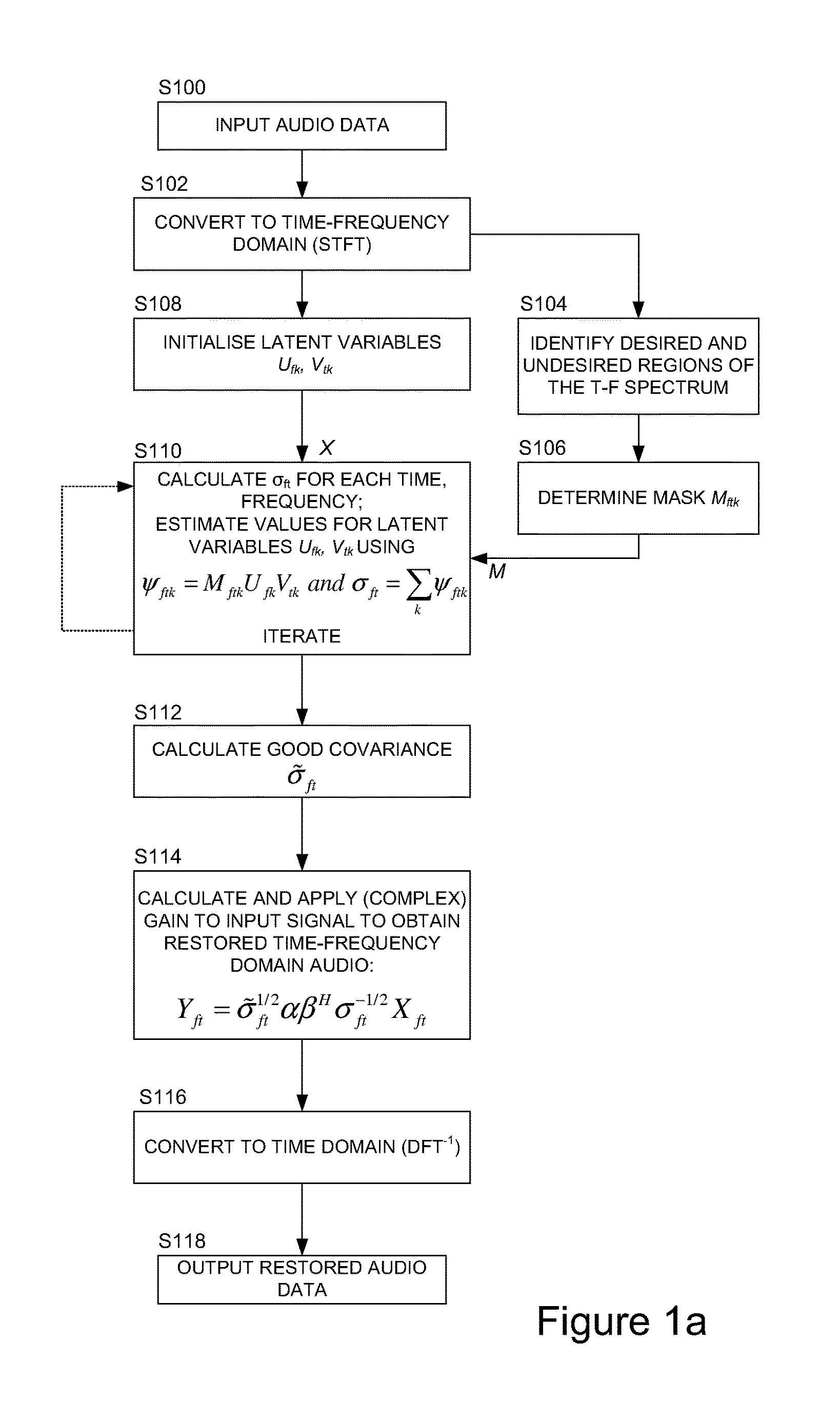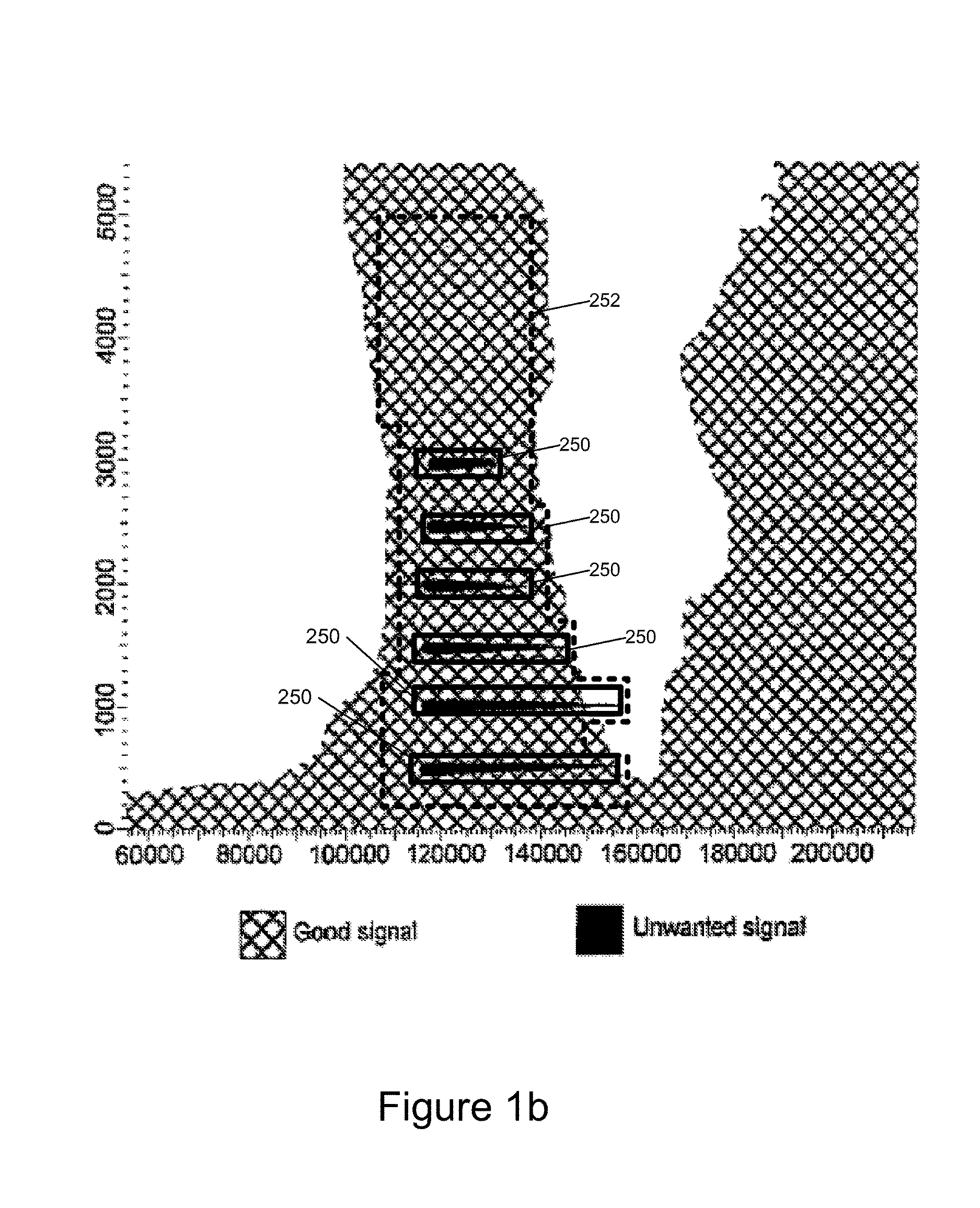Restoring audio signals with mask and latent variables
a technology of masks and variables, applied in the field of methods, apparatus and computer program codes for restoring audio signals, can solve problems such as common problems such as the introduction of unwanted sounds, and achieve the effect of effective reconstruction
- Summary
- Abstract
- Description
- Claims
- Application Information
AI Technical Summary
Benefits of technology
Problems solved by technology
Method used
Image
Examples
example implementation
[0139]Referring now to FIG. 1a, this shows a flow diagram of a procedure to restore an audio signal, employing an embodiment of an algorithm as described above. Thus at step S100 the procedure inputs audio data, digitising this if necessary, and then converts this to the time-frequency domain using successive short-time Fourier transforms (S102).
[0140]The procedure also allows a user to define ‘desired’ and ‘undesired’ masks, defining undesired and support regions of the time-frequency spectrum respectively (S104). There are many ways in which the mask may be defined but, conveniently, a graphical user interface may be employed, as illustrated in FIG. 1b. In FIG. 1b time, in terms of sample number, runs along the x-axis (in the illustrated example at around 40,000 samples per second) and frequency (in Hertz) is on the y-axis; ‘desired’ signal is cross-hatched and ‘undesired’ signal is solid. Thus FIG. 1b shows undesired regions of the time-frequency spectrum 250 delineated by a user...
PUM
 Login to View More
Login to View More Abstract
Description
Claims
Application Information
 Login to View More
Login to View More - R&D
- Intellectual Property
- Life Sciences
- Materials
- Tech Scout
- Unparalleled Data Quality
- Higher Quality Content
- 60% Fewer Hallucinations
Browse by: Latest US Patents, China's latest patents, Technical Efficacy Thesaurus, Application Domain, Technology Topic, Popular Technical Reports.
© 2025 PatSnap. All rights reserved.Legal|Privacy policy|Modern Slavery Act Transparency Statement|Sitemap|About US| Contact US: help@patsnap.com



